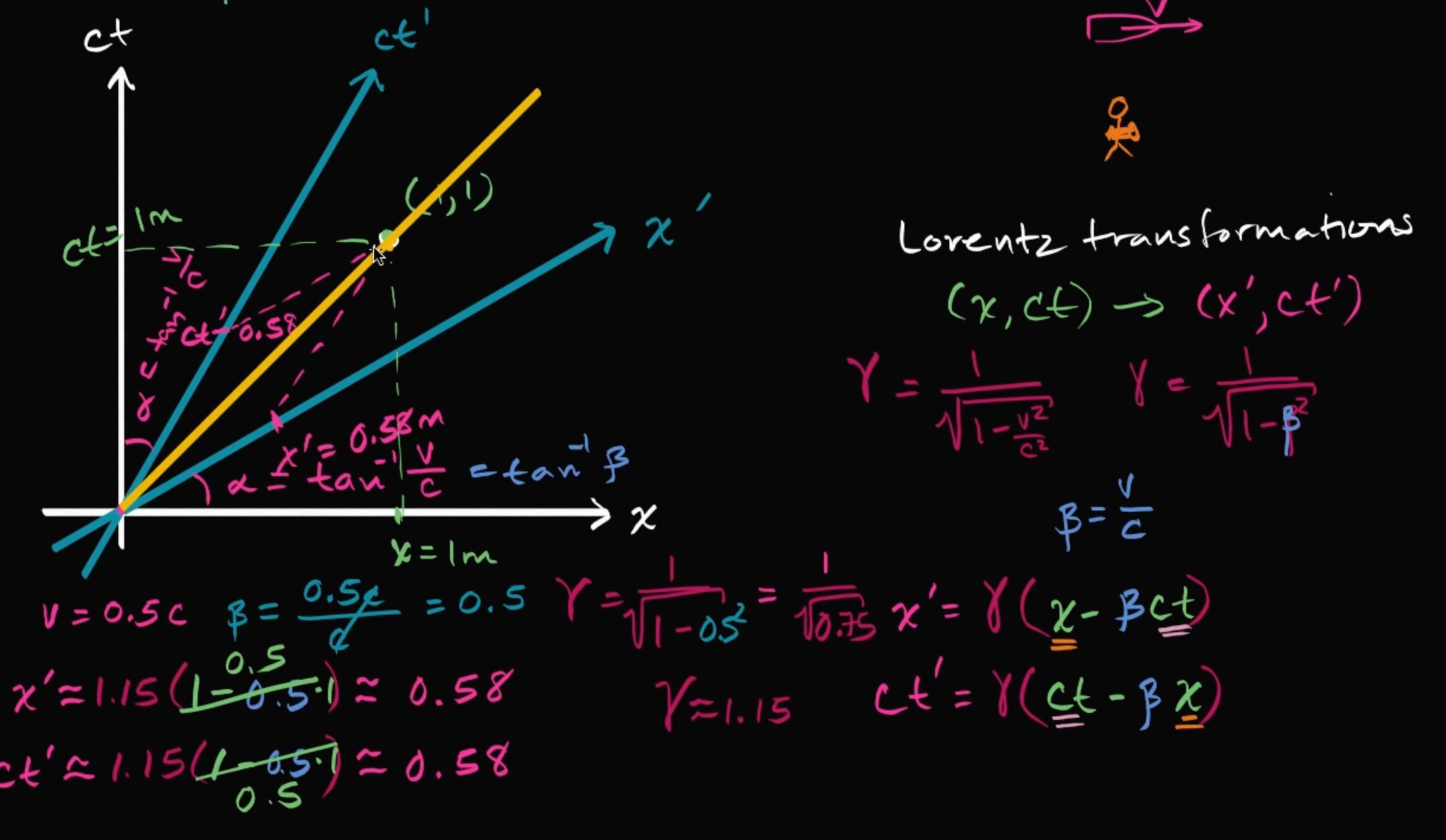I am currently confused about things I read about special relativity (I'm a CS major and not as well-versed in physics as I would like to be).
I just watched a video on evaluating a Lorentz transformation of Khan Academy (link below), here's a screenshot I took of the final few minutes. It essentially says that if a stationary person would shine a light on an asteroid that is x=1 away, the stationary person would observe that asteroid to light up at ct=1, whereas the person going at 0.5c in a spaceship sees this asteroid light up at 0.58ct and 0.58x on the x-axis.
The way I interpreted this is that after 0.58ct proper time (on the spaceship), this person sees that asteroid light up whereas this seemed to happen after 1ct in stationary time. So far so good.
Now I also found a tool that lets me calculate Time Dilation given the velocity of a spaceship on OmniCalculator. It tells me that for 1ct in stationary time, we would have only 0.86ct pass in proper time on the spaceship going at 0.5c. This is where I got confused. Am I mixing things up? Why are the numbers 0.86 and 0.58 different? I would have expected them to be the same. Shouldn't they be? I'm almost certain that I am mixing things up.
Also, what does it mean for ct' in the Khan Academy example to be at 0.58 as well? Does that mean the person in the spaceship going at 0.5c thinks that the asteroid that lights up is closer than that the stationary person does?
Any clarification would be appreciated, thank you.
Khan Academy video: https://www.youtube.com/watch?v=G-aTU0RXJww


